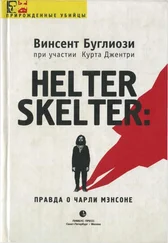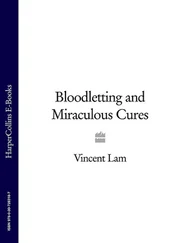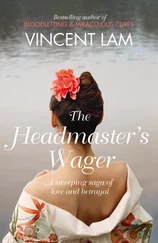“Well, Charles Manson has already been convicted. He has already been convicted of seven counts of first degree murder and one count of conspiracy to commit murder.
“The difficulty in your decision, as I see it, is not whether these defendants deserve the death penalty, ladies and gentlemen. In view of the incredibly savage, barbaric, and inhuman murders they committed, the death penalty is the only proper verdict.” I then stated the very heart of my argument: “ If this case were not a proper case for the imposition of the death penalty, no case ever would be. In view of what they did, life imprisonment would be the greatest gift, the greatest charity, the greatest handout, as it were, ever given.
“The difficulty in your decision, as I see it, is whether you will have the fortitude to return verdicts of death against all four defendants.”
The defense attorneys, I anticipated, would beg for their clients’ lives. This was not only commendable, I told the jury, it was also understandable, just as it was understandable that they “argued during the guilt phase that their clients were not involved in these murders, even though during the penalty phase the three female defendants took the stand and said: ‘Yes, we were involved.’”
There was absolutely no reason for these defendants to viciously and inhumanly snuff out the lives of these seven human beings, I noted. There were no mitigating circumstances.
“These defendants are not human beings, ladies and gentlemen. Human beings have a heart and a soul. No one with a heart and a soul could have done what these defendants did to these seven victims.
“These defendants are human monsters, human mutations.
“There is only one proper ending to the Tate-LaBianca murder trial,” I concluded, “verdicts of death for all four defendants.”
Kanarek stipulated, at the start of his argument, that “Mr. Manson is not all good.” However, he continued, “Mr. Manson is innocent of these matters that are before us.”
Why was he on trial then? Kanarek returned to his two favorite themes: “Mr. Manson has had quite a share of troubles because of the fact that he likes girls.” And he was only brought to trial “so someone in the District Attorney’s Office can have a gold star and say, ‘I got Charles Manson.’”
Kanarek’s argument stretched over three days. It was occasionally ridiculous, as when he said, “We can perform a public service for the United States of America by giving these people life, because if there is a revolution, this is the kind of thing that could spark it.” It was sometimes unintentionally funny, as when he stated that, unlike Patricia Krenwinkel and Leslie Van Houten, “Charles Manson has no family to come here to testify.” But mostly he tried to plant little seeds of doubt.
Why, if Susan Atkins lied on the stand to absolve Manson, would she have implicated him in the Hinman murder? Wasn’t the fact that Manson himself shot Crowe, to protect the people at Spahn Ranch, evidence that he didn’t need to order others to act for him? If these girls were lying about Manson’s non-involvement in the murders, wouldn’t they have also lied and said they had sorrow and remorse?
Kanarek only briefly mentioned the copycat motive; he didn’t even try to argue it. Instead, he suggested still another alternative motive. “But for the fact that at least some of these people [supposedly referring to the Tate victims] were engaged in a narcotic episode of some type, these events would not have taken place.”
Daye Shinn, who argued next, fastened on Dr. Hochman’s statement that he believed these girls had subconscious if not conscious remorse.
As for Susan, “She is still young,” Shinn argued. “She is only twenty-two years old. I believe there is still a hope of rehabilitating her…Maybe someday she may be rehabilitated to the extent that she may finally realize what she has done was not right. I believe that she deserves the chance, an opportunity, so that maybe someday she may be released and live the rest of her life out of prison.”
This was very bad strategy on Shinn’s part, implying that if Susan Atkins was given life imprisonment she might someday be released on parole. By law, the prosecution can’t argue this, it is so prejudicial to the defendant.
Of the four defense attorneys, Maxwell Keith gave the best opening argument. He was also the only one who really attempted to rebut my contentions.
“Mr. Bugliosi tells you that if the death penalty is not appropriate in this case, it would never be appropriate. Well, I wonder if it ever is appropriate?
“Mr. Bugliosi read to you at the close of his argument on the guilt phase the roll call of the dead. Let me read to you now, ladies and gentlemen, the roll call of the living dead: Leslie, Sadie, Katie, Squeaky, Brenda, Ouisch, Sandy, Cathy, Gypsy, Tex, Clem, Mary, Snake, and no doubt many more. These lives, and the lives of these three young girls in particular, have been so damaged that it is possible, in some cases, their destruction is beyond repair. I hope not, but it is possible.”
Leslie Van Houten, he strongly argued, was capable of rehabilitation. She should be studied, not killed. “I am not asking you to forgive her, although to forgive is divine. I am asking you to give her the chance to redeem herself. She deserves to live. What she did was not done by the real Leslie. Let the Leslie of today die—she will, slowly and maybe painfully. And let the Leslie as she once was live again.”
Nowhere in Paul Fitzgerald’s argument, which followed, did he state, or even imply, that Manson was responsible for what had happened to Patricia Krenwinkel.
“Patricia Krenwinkel is twenty-three years old,” Fitzgerald observed. “With 365 days in the year, there are approximately 8,400 days in 23 years, and approximately 200,000 hours in her lifetime.
“The perpetration of these offenses took at best approximately three hours.
“Is she to be judged solely on what occurred during three of 200,000 hours?”
Just before court commenced on March 23, I walked over to the water cooler. Manson, in the nearby lockup, called out to me, rather loudly, “If I get the death penalty, there is going to be a lot of bloodletting. Because I am not going to take it.”
Both the court clerk and Steve Kay overheard the remark. Kay intemperately rushed out of the courtroom and repeated it to the press. Learning of this, I asked the reporters not to print it. The Herald Examiner wouldn’t agree, and it broke the story with a banner headline:
MANSON DEATH THREAT
Warns of Terror
If Doomed to Die
Before this, however, Judge Older, made aware of what had happened, decided that rather than wait to the close of arguments, he would sequester the jury immediately.
In my final argument I rebutted point by point the earlier defense contentions. For example, the defense had claimed that Linda got her story from listening to the Susan Atkins tapes. Why would Linda need to listen to the tapes, I asked, when she was present both nights?
Kanarek had told the jury that if they returned death penalty verdicts, they would be killers. This was a very heavy argument. As support, he cited the Fifth Commandment: “Thou shalt not kill.”
In answer, I told the jury that most biblical scholars and theologians interpret the original language to mean: “Thou shalt not commit murder,” which is exactly how it appears in the New English Bible, dated 1970.
The Ten Commandments appear in Exodus, chapter 20, I noted. What Kanarek did not mention, I observed, is that the very next chapter authorizes the death penalty. Exodus 21, verse 12, reads: “Whoever strikes a man a mortal blow must be put to death,” while verse 14 of the same chapter reads: “When a man kills another, after maliciously scheming to do so, you must take him even from my altar and put him to death.”
Читать дальше












